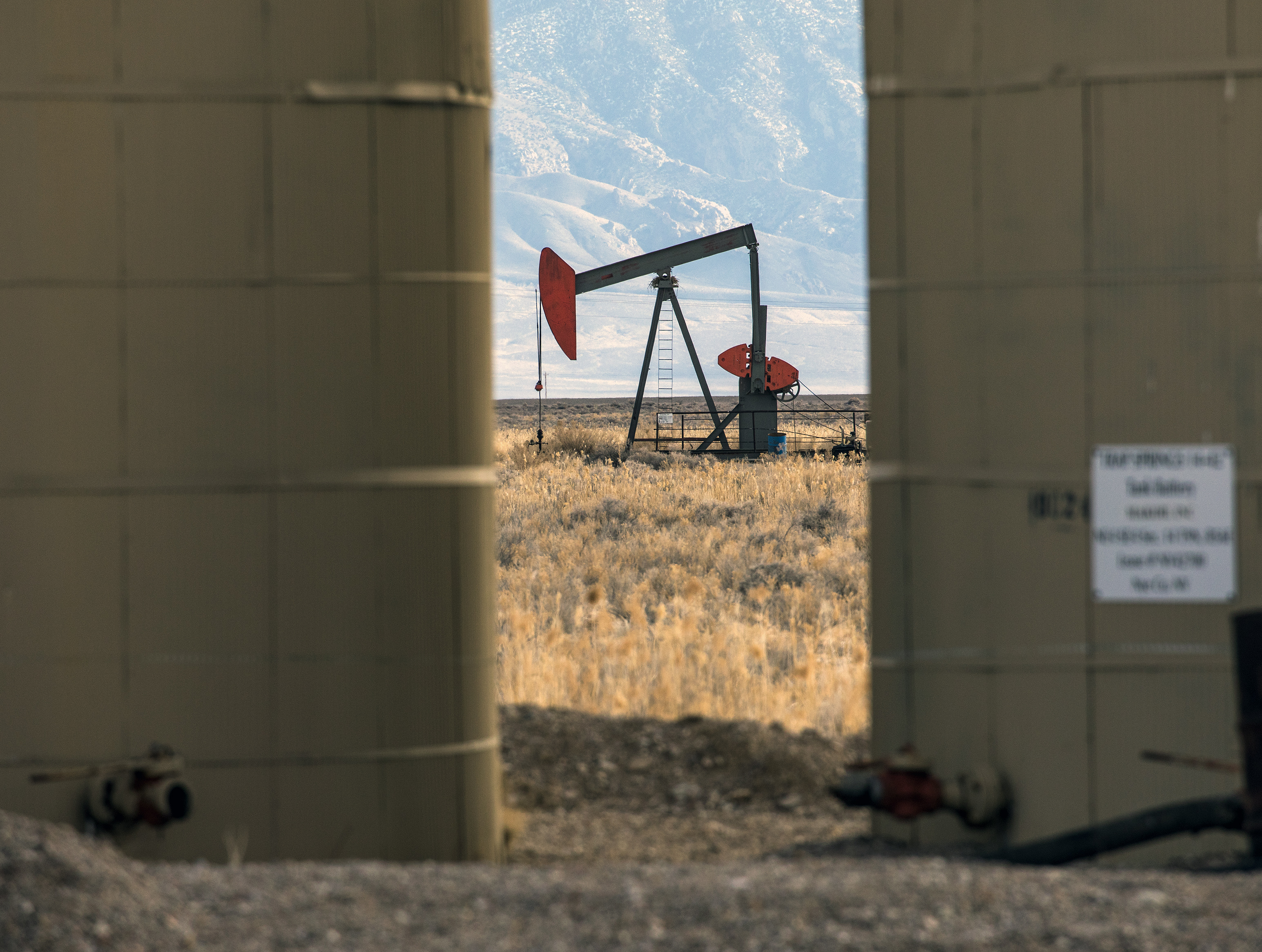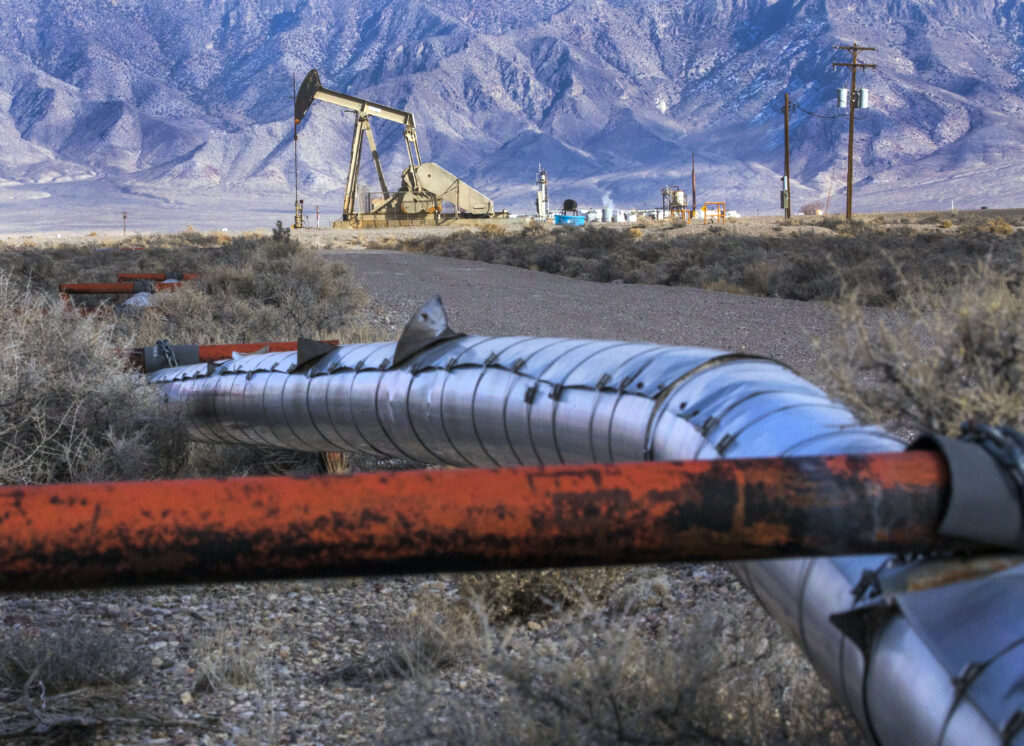Price hikes for leasing land for oil, gas exploration could force industry out of Nevada

Updates by the Bureau of Land Management (BLM) to its oil and gas leasing rule for public lands will likely discourage the industry from continuing to operate in states like Nevada where exploration rarely turns up a substantial oil deposit, according to state officials.
With last month’s updates — the first comprehensive overhaul of the rule since 1988 and the first update to some components of it in more than a century — oil and gas companies will have to pay more to drill on public lands, a move praised by conservation groups but one Nevada officials say could eliminate several million dollars per year from state and county coffers.
“This doesn’t do a lot of favors for Nevada,” said Dustin Holcomb, fluid minerals manager for the Nevada Division of Minerals. “Nevada’s already a very marginal oil state. Exploration here will pretty much be eliminated by this change in leasing rules.”
Nevada has produced nominal amounts of oil over the decades, with a brief spike in the early 1990s. The state’s natural gas production has been even less fruitful — Nevada has never had commercial natural gas production.
Oil and gas production on Nevada’s federal land accounts for just 0.1 percent and 0.0001 percent of all oil and gas produced on federal lands. But fees associated with exploration of the state’s vast public lands provides modest revenue of several million dollars annually to the state and some counties — revenue now at risk of drying up.
A slow history of production
Nevada’s first oil well was drilled in 1907 southwest of Reno. Few wells were drilled in the decades that followed until the 1950s, when Shell Oil Company drilled and completed a project in Nye County’s Railroad Valley, becoming the first commercial oil producer in the state.
A second major oil discovery was made in Railroad Valley in 1976 by Northwest Exploration Company, and exploration and production of oil in Nevada continued almost exclusively in Railroad Valley until 1982, when Amoco Production Company discovered oil in Eureka County. This discovery of oil outside Railroad Valley renewed interest in the state.
Between 1955 and 2021, Nevada produced just under 55 million barrels of oil, with the bulk of that production occurring from 1985 to 1992 — peaking in 1990 when more than 4 million barrels of oil were extracted.
In 2022, roughly 235,000 barrels of oil worth $19.2 million were produced in Nevada, a far cry from oil-rich states such as Texas, where 1.92 billion barrels of oil were extracted that year.
The last major industry interest was about a decade ago, when Noble Energy proposed an oil project using hydraulic fracturing or “fracking” in northeastern Nevada. The company’s proposal came as the state’s division of minerals and division of environmental protection were drafting fracking regulations per the direction of the 2013 Legislature.
Environmentalists, tribal nations and other critics expressed concern about the practice, and in 2017, the Democrat-controlled state Assembly approved a bill along party lines that would have banned fracking in the state; the bill was ultimately vetoed by Republican then-Gov. Brian Sandoval.
There have been seven applications for fracking wells since those regulations went into place. While a couple went into production, two of the leases expired before they were ever drilled.
How it works
Companies interested in exploring oil and gas resources on federal land nominate acreage they are interested in exploring. The BLM conducts environmental assessments, and if land is deemed eligible for exploration, it is offered up for competitive leases. Land that is not “sold” during an auction is then offered up in noncompetitive leases.
Conservation and watchdog groups such as the Nevada Wildlife Federation and the Institute for a Progressive Nevada historically have opposed the process on the grounds that the speculative leasing ties up land that could be better managed for purposes such as wildlife corridors, recreation and utility-scale solar developments.
Spokespeople from the BLM’s headquarters and Nevada State Office did not reply to requests for interviews for this story, including to clarify how leases affect public lands.
But Nevada Division of Minerals Administrator Rob Ghiglieri told The Nevada Independent that leases don’t stop people from recreating or siting projects such as solar on land leased for oil and gas exploration.
“There's nothing stopping recreation on these leases because they cover huge areas of land, and surface development is just on small sections,” Ghiglieri said.
Under the Biden administration, 10,778 acres of Nevada’s public land have been offered up for oil and gas leasing, with just 19 percent sold. Nationally, Nevada has had the fourth most public land offered up under the administration for oil and gas leasing, but those parcels rarely receive bids.
“The BLM has a lot of uses they need to prioritize and account for on our public land,” said Russell Kuhlman, executive director of the Nevada Wildlife Federation. “We all know the BLM is critically understaffed and critically underfunded, and someone still has to use time and resources to prepare these leases.”
The lack of leases on nominated land “very much shows that investors in oil and gas are really starting to invest wisely and not just throwing money to oil and gas companies to buy up land that will never be developed,” he added.
Sen. Catherine Cortez Masto (D-NV) has introduced legislation to prohibit oil and gas leasing on low- to no-potential public lands. It is still in committee.
She has also introduced other legislation to withdraw 450,000 acres from the Humboldt-Toiyabe National Forest’s Ruby Mountain Ranger District from oil and gas leasing. The range is a popular recreation area and important habitat for wildlife, including the state’s largest deer herd. That bill is waiting for movement in the Senate.

‘Marginal oil lands’
In 2022, Congress passed the Inflation Reduction Act, which included the first-ever increase to onshore royalty rates for new oil and gas leases in more than a century.
The new rule from the BLM reflects the provisions in the Inflation Reduction Act, while also increasing the minimum rental rate for leases and raising bonding rates to incentivize companies to clean up old drilling sites — or cover remediation costs if they fail to do so.
Key elements of the finalized rule include:
- Bonding Requirements: The rule increases the minimum lease bond amount from $10,000, a rate set in 1960, to $150,000.
- Royalty rates for leases are set at 16.67 percent. Previously, the minimum royalty rate — the percentage of the proceeds from the oil’s sale — was 12.5 percent.
- Minimum bids: The minimum amount companies can bid for federal oil and gas leases will increase from $2 to $10 per acre. During Nevada’s last oil sale, no leases came close to $10 per acre, Ghiglieri said.
- Minimum rental rates: Previously, companies paid $1.50 per acre for each of the first five years of holding a lease, then $2/acre for the next five years. Now, companies will pay $3 per acre per year during the first two years, $5 per acre for the following six years, then $15 per acre each following year.
- Expressions of interest: The Inflation Reduction Act established a new $5/acre fee for informal nominations of land available for lease.
“With those increased costs … that’s pretty much going to reduce those who are interested in drilling marginal oil lands,” Holcomb said.
Financial repercussions for the state
Though Nevada doesn’t generate nearly as much revenue from oil and gas as it does from minerals such as gold and silver, their extraction still contributes to state and county funds.
Oil and gas lease payments, rentals and royalty fees are split 50-50 between the federal government and the state.
The industry also pays state taxes and fees, including a 5 percent net royalty rate and production and administrative fees.
Net proceeds of the state taxes and fees are split between the county where they were generated and the state. In 2021, Nevada lawmakers passed AB495, redirecting the state’s portion of those proceeds to its education fund.
In 2014, the annual net proceeds from state fees for oil — the fees split between the county of origin and the state — was $2 million, compared to the $168 million generated by gold and silver.
While the proceeds and fees individually might not amount to much, combined, they are “a decent hunk of money,” Ghiglieri said, especially for agencies like his, which operate on an annual budget of $3 million to $4 million.
